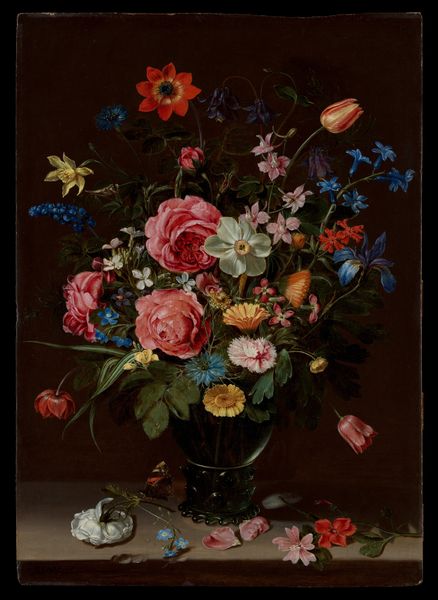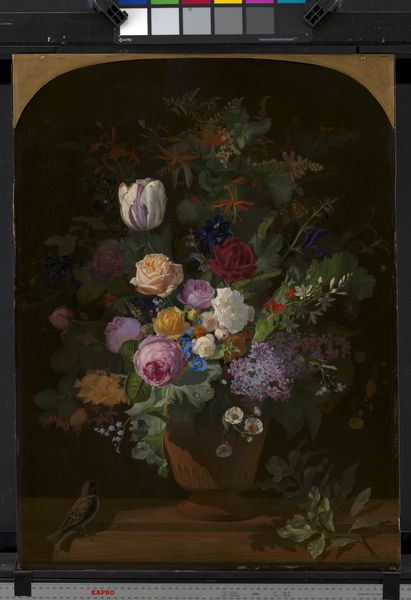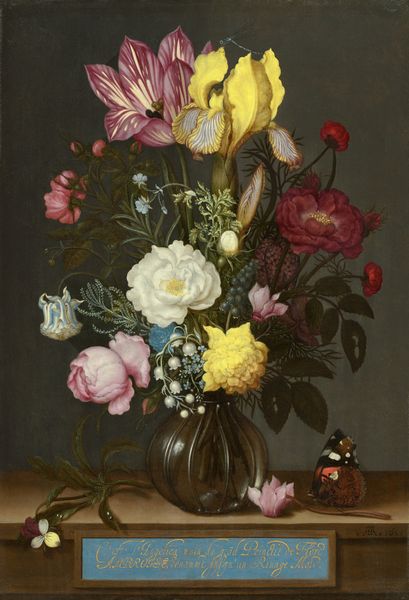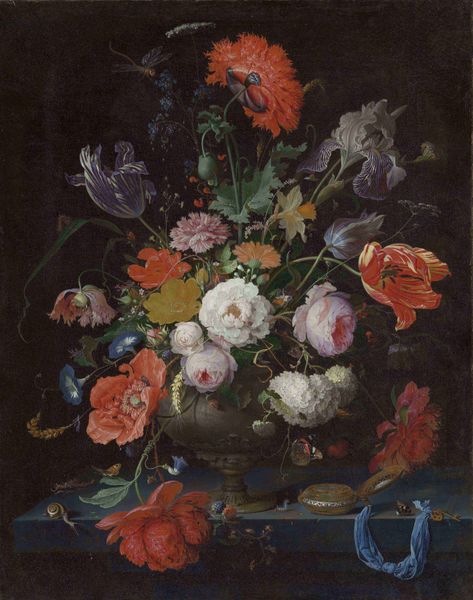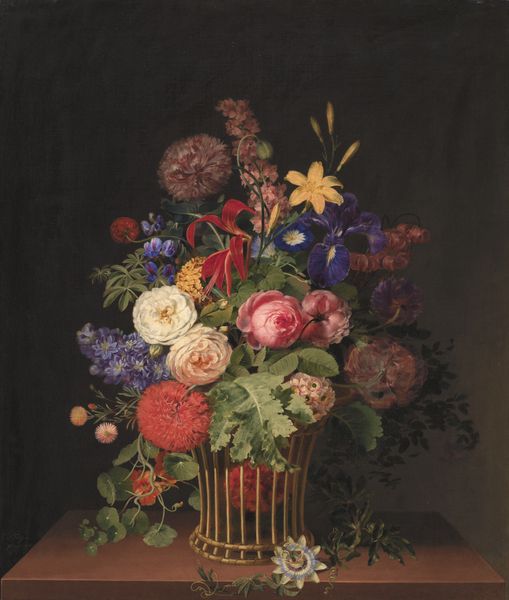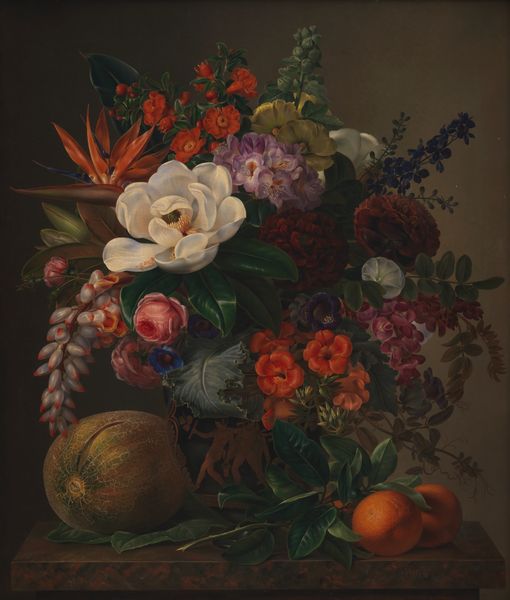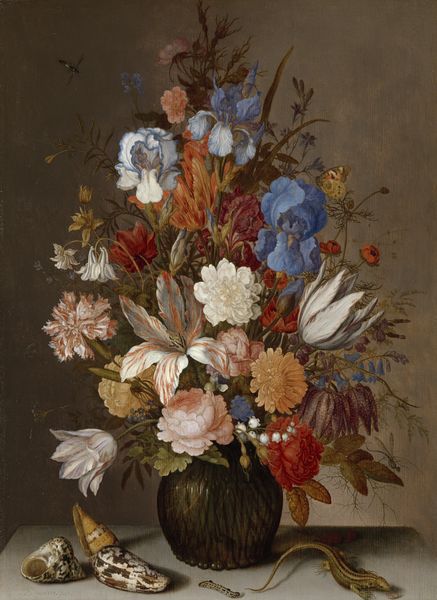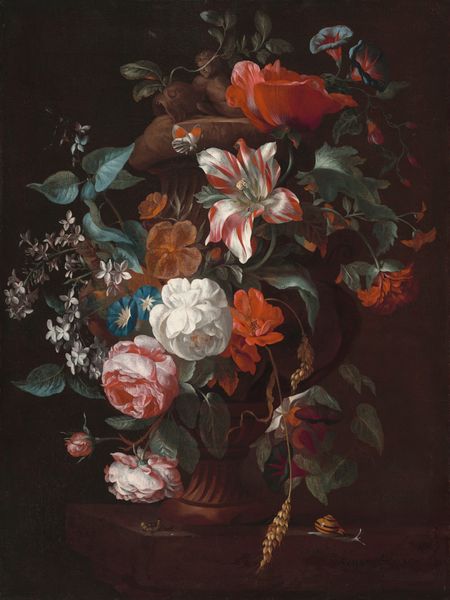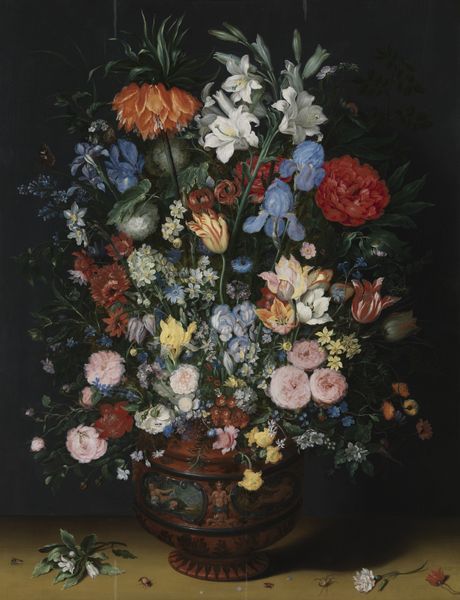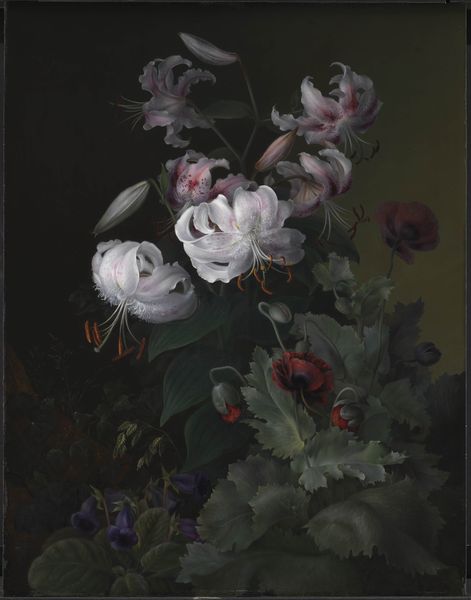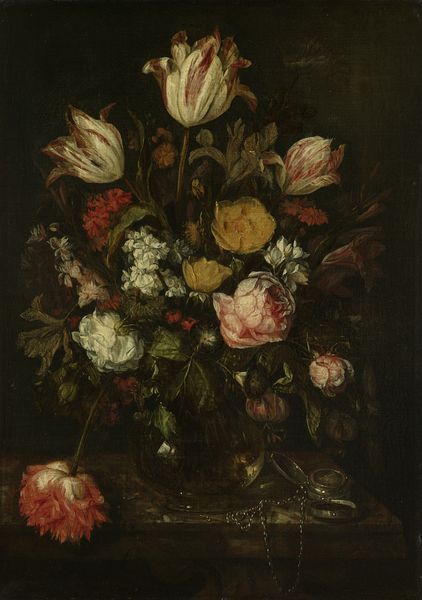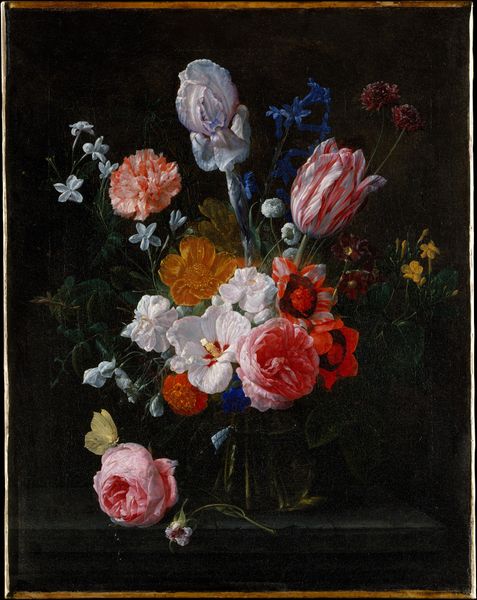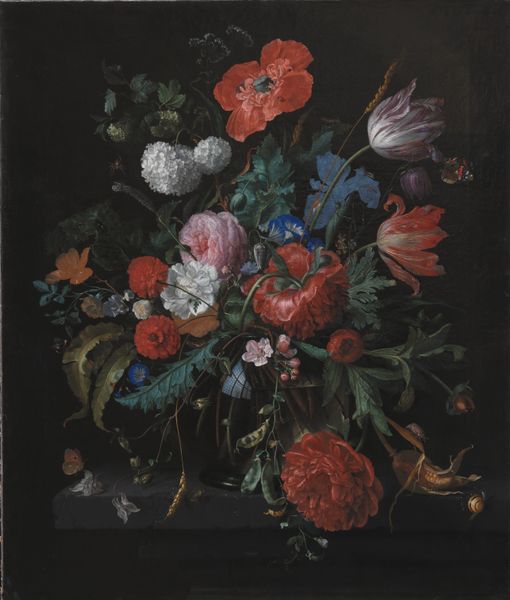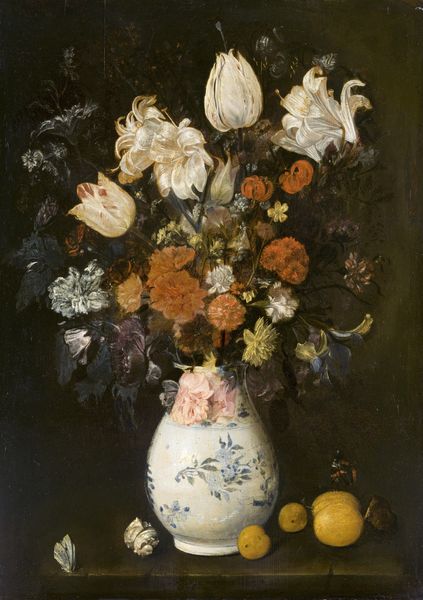
painting, oil-paint
#
baroque
#
dutch-golden-age
#
painting
#
oil-paint
#
flower
#
vase
Dimensions: 33 1/2 x 24 5/8 in. (85.1 x 62.5 cm)
Copyright: Public Domain
Editor: Here we have Jacob Vosmaer's "A Vase with Flowers" from 1613, currently at the Metropolitan Museum of Art. It's an oil painting, and I am struck by how much depth the dark background adds to the whole composition. It feels almost staged. What historical context should we keep in mind while viewing it? Curator: Indeed, this still life exists within a rich social and political landscape. Paintings like these, especially during the Dutch Golden Age, transcended simple depictions of beauty. Consider the patronage system; these works weren’t made in a vacuum. Who commissioned them, and what did these flowers symbolize to the aspiring middle class? Editor: So, you're saying it’s about more than just liking flowers? Curator: Precisely! It speaks to burgeoning wealth and a desire for status through consumer goods. Notice anything unusual? Editor: I see a tulip that's almost… striped? Curator: A sharp eye! These were 'broken' tulips, highly prized and wildly expensive at the time during the tulip mania. By placing it so prominently, what could Vosmaer be commenting on? Was it celebrating newfound financial freedoms, perhaps also commenting on the absurdity of speculating flower markets? Editor: It feels like there's both admiration and maybe a bit of a wink involved, a commentary on fleeting beauty and, maybe, financial instability. It makes me consider what symbols will communicate those issues in *our* time. Curator: Absolutely. Appreciating the socio-economic context really transforms our perception of this otherwise simple bouquet. It compels us to think about art’s broader cultural influence, doesn't it?
Comments
No comments
Be the first to comment and join the conversation on the ultimate creative platform.
